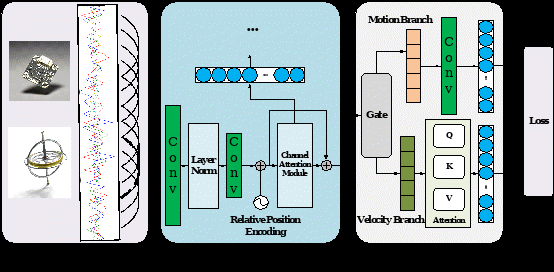Tracking worker locations accurately on busy construction sites is essential for improving safety and efficiency. However, current methods are often too expensive or not reliable enough. Our research introduces a new method called MARSNet, which uses the sensors already inside standard smartphones to track worker locations. This approach provides an accurate, low-cost solution without needing any extra hardware.
1. The Goal: Improving Accuracy Amidst Limitations
Positioning methods that only use a phone's motion sensors (IMU) inherently suffer from cumulative errors, also known as drift. This means the calculated position becomes less accurate the longer a person moves. While this drift cannot be eliminated with an IMU alone, our goal was to design a system that is more robust against these errors and can produce a more reliable trajectory than traditional methods.
2. Our Method: MARSNet
The core of our work is the MARSNet (Motion-Aware Regression System Network). It processes data from the phone's accelerometer and gyroscope.

Fig.1 The proposed architectural diagram of the positioning system.
A key innovation is its multi-task learning design. The network simultaneously learns to:
Recognize the worker's action: It identifies how the phone is being carried (e.g., in hand, pocket, or shaking).
Regress the worker's velocity: It uses the action information to more accurately calculate the worker's speed and direction.
By understanding the phone's motion context, the system can better correct for sensor errors and improve the final trajectory's accuracy.
3. Experimental Results
We tested MARSNet in real-world scenarios, with volunteers walking along predefined paths while carrying a smartphone in various common ways. We compared our system's calculated trajectory to a high-precision ground truth system.
The results showed that our method achieves an average Absolute Trajectory Error (ATE) of 1.311 meters, which is a strong performance for an infrastructure-free system. The predicted path remained consistently close to the actual path, demonstrating the method's accuracy and robustness.
4. Applications and Future Work
This method has several practical applications:
Safety:It can be used for hazardous area warnings.
Efficiency: It allows for analyzing work patterns and optimizing site resources.
Low Cost:As it only requires a smartphone, it significantly reduces deployment costs.
We also acknowledge the importance of privacy and suggest that any real-world use should include measures like data anonymization to protect workers' information.
Future research will focus on fusing this data with other sensors, like barometers for floor-level detection, and optimizing the algorithms to run more efficiently on the device.


